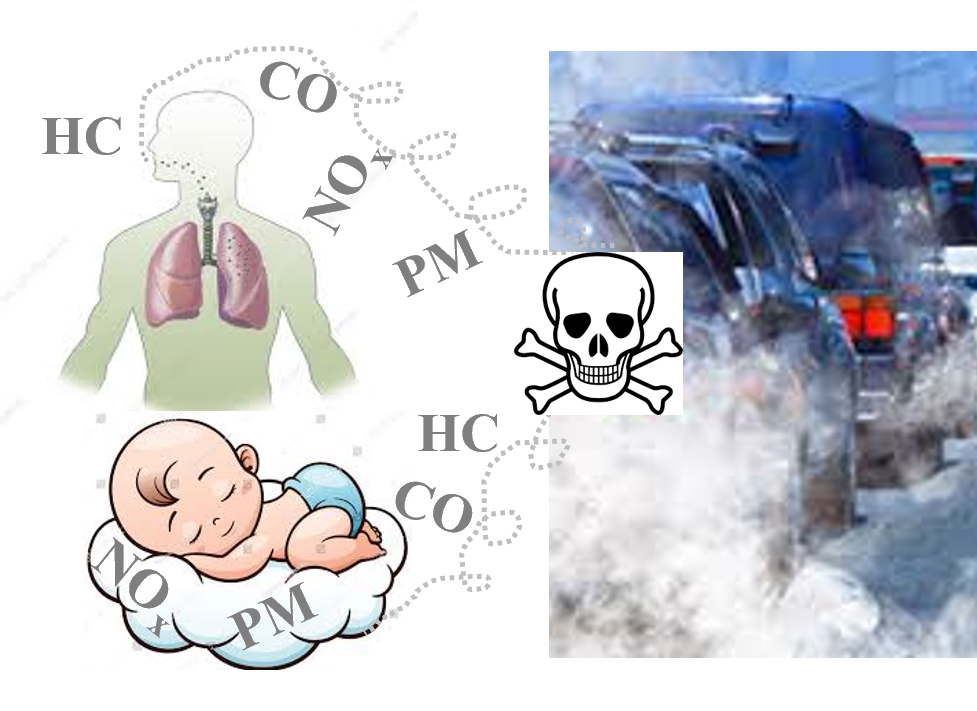Our Project
Mobility vs. Liveability – Mobility of people and goods is of social importance since it is a fundamental human need that promotes social cohesion and inclusion. It is also of economic importance because it allows us to travel to work and school and allows businesses to obtain resources from suppliers and sell products to consumers. Mobility benefits from a safe and efficient transport system where transport from A to B is seamless and fast, and where congestion and crash risk is minimised. In addition, we want our cities to be liveable, where mobility occurs with low CO2 emissions to save the planet and with few pollutants such as PM10 and NOx that have a negative impact on our health. Nonetheless, ironically, as a society we still constantly adhere to the paradox of trading off liveability for mobility. In Australia, road transport is responsible for about 16% of total greenhouse gas emissions. Official figures show that on current trends, Australia will only reach an emission reduction target of 7 per cent on the 2005 level by 2030, 19 percentage points short of the minimum target mandated by the Paris agreement. While energy consumption and emissions occur as vehicles travel throughout the entire road network, intersections of urban streets and merging/diverging ramps of motorways are locations of particular importance. A recent study shows that 10% of American drivers’ journey delayed by traffic signals, and that a one second improvement in delay per vehicle would eliminate more than 1.5 million metric tons of CO2, saving 3.9 million barrels of oil annually. The result will be truly extraordinary in fighting against climate change if stops and delays at intersections and merging/diverging areas can be reduced or eliminated via emerging technologies to turn the green light to the green wave. This motivated this proposal.
Existing uncoordinated approach – In the past decades, liveability has been tackled separately from safety and efficiency in a relatively uncoordinated approach. For example, existing traffic operations and control strategies focus solely on the movement of vehicles and do not consider energy savings or emissions. This is no surprise since transport, the environment, and health are the focus of three different governmental departments. This disconnect is also visible in various publications of Austroads, a not-for-profit organisation funded by the Australian and New Zealand government to advise them to ‘deliver efficient, reliable and safe mobility to their customers’ (taken from Austroads website). Their publications such as “Guide to Smart Motorways” and “Future Vehicles & Technology Program” describe technology-based solutions that focus on safety and efficiency without considering the impact on liveability. While they also report on “Low and Zero Emission Vehicles”, they mainly describe actions that road operators can take to support the transition to electric vehicles, without addressing liveability issues.
Proposed coordinated and AI-driven eco-driving approach – The concept of eco-driving is not new, which involves adopting driver behaviours that can result in reduced emissions and fuel consumption, however, it was largely regarded as impractical because traditional vehicles are neither accessible nor controllable to traffic operators, until the emergence of connected and automated vehicles (CAVs). CAVs are vehicles that combine communication and automation technologies to assist or replace human drivers, and hold great potential to improve safety and efficiency as well as liveability simultaneously by implementing eco-driving strategies. The increased availability of real-time traffic information through the wide deployment of communication infrastructures and Internet of Things (IoT) devices enhances this potential.
Aims
To achieve Mobility for Liveability through the development of novel eco-driving strategies for the current and future transportation systems by integrating advanced driver behaviour models and novel traffic control methods, using cutting-edge artificial intelligence (AI) techniques.
Objectives
- Develop a Sustainable Energy-Efficient Novel (SEEN) driver behaviour model, capable of realistically describing driver behaviour and accurately estimating energy consumption and greenhouse gas emissions.
- Develop hierarchical control strategies for CAVs combining deep learning techniques with advanced control methods to increase efficiency and safety while minimising emissions.
- Develop a comprehensive microsimulation platform capable of integrating traffic simulation module, a vehicle energy consumption and emissions module, a vehicular communication module, and an autonomous driving simulator.
- Evaluate the performance of these control strategies in a real-world CAV testbed.
Our Team
Project Leader
- Prof Zuduo Zheng, University of Queensland (UQ)
Project Team
- D/Prof Lidia Morawska, QUT
- A/Prof Jiwon Kim, UQ
- Prof Michiel Bliemer, University of Sydney (USyd)
- Prof Hesham Rakha, Virginia Polytechnic Institute and State University, USA
- A/Prof Cathy Wu, Massachusetts Institute of Technology, USA
Funding / Grants
- Australian Research Council (ARC) Discovery Projects DP230101927 (2024 - 2028)
